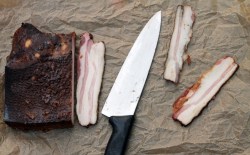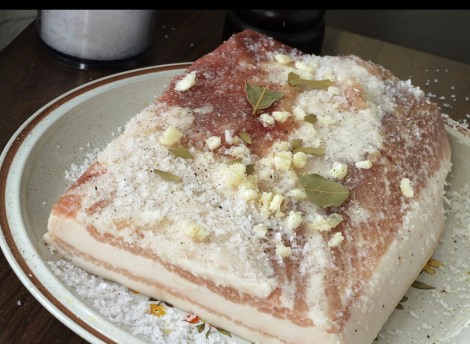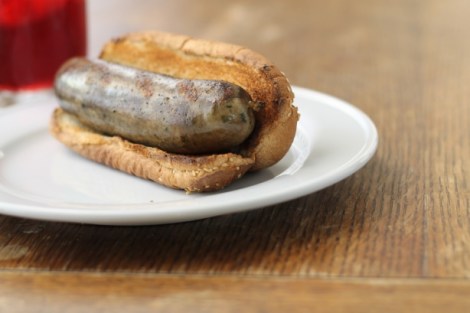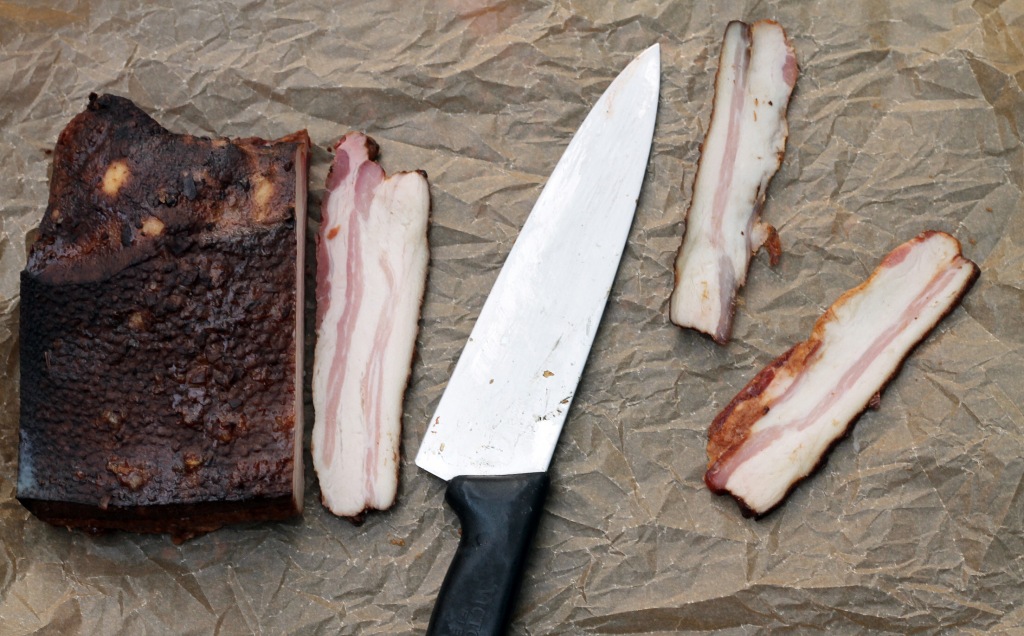
Photos by Meredith Bethune.
Even some of the most adventurous home cooks hesitate to make their own charcuterie — meats processed for preservation in the European tradition. (Bacon, pâté, pancetta, salami, sausages, and prosciutto are all good examples.)
I was no different; before I started learning the craft, thanks in part to a food blogging challenge called Charcutepalooza, I thought charcuterie involved boiling pig heads for hours and hanging moldy salamis in my home.
It all started because I wanted make locally sourced bacon and sausages — the kind that are available in Texas, but not always easy to find. Then, thanks to Slow Food Austin, I visited a local family farm that raises livestock on large, open pastures and bought ingredients like pork belly from them in bulk at a discount.
Not that finding local sources for the meat cuts and offal I needed was easy. Small farmers in Texas are limited to a handful of slaughterhouses, and these operations don’t always have the resources to save tripe, caul fat, and other obscure parts prized by chefs and foodies. I had to get creative. I found cuts like liver and beef tongue by arriving early at the farmers market or ordering in advance. For wild venison, I ended up ordering from Broken Arrow Ranch, a unique purveyor that (legally) sells “field harvested” wild game by bringing along a licensed meat inspector on hunting excursions.
The best part about making charcuterie is almost nothing gets wasted. I transformed trimmings from sausage-making into rillettes or country pâté. I also poached and pureed my way to a chicken galantine — a deboned bird filled with an inlay of chicken breasts and pâté — that could have fed at least eight people.
Interested in trying it? I recommend starting with duck prosciutto, bacon, pancetta, pâté, or sausages. The resulting products are often just as good and less expensive than those sold in artisan markets.

Homemade Bacon
Adapted from Charcuterie by Michael Ruhlman and Brian Polcyn.
3 pounds slab pork belly
¼ cup kosher salt
2 tablespoons sugar
½ teaspoons pink salt (sodium nitrite), optional
3 cloves garlic, coarsely chopped
½ teaspoon ground black pepper
½ teaspoon red pepper flakes
¼ teaspoon fresh rosemary, chopped
3 bay leaves, crumbled
1. Combine the sugar and salts in a bowl to make a dry cure. Rub it into all sides of the meat. Combine the herbs and spices in another bowl, and then press them into the pork belly as well.
2. Place the pork belly in a large Ziploc bag, and leave it in the fridge for about seven to 10 days, or until it is convenient to smoke it. Turn it about every other day and rub the salt and seasonings into the flesh.
3. After the time period has passed, rinse the dry cure off of the pork belly and pat it dry with paper towels. Smoke it until it reaches an internal temperature of 150 degrees.
4. Allow the bacon to cool to room temperature, and then wrap it tightly in plastic wrap. It will keep in the fridge for up to three weeks.

Green Chile Chicken Sausages
3 1/2 pounds boneless, skinless chicken thighs, cubed
1 1/2 pounds pork belly, diced into 1-inch pieces
3 tablespoons kosher salt
1 teaspoon freshly ground black pepper
1 1/2 teaspoons garlic
1 teaspoon cumin
4 tablespoons chopped cilantro
3/4 cup chopped, roasted mild green chiles like Poblano or Hatch
1/4 cup tequila
1/4 cup olive oil
10 feet hog casings (optional)
1. Combine the chicken, pork belly, salt, pepper, garlic, cilantro, and chiles. Refrigerate until ready to grind.
2. Using a meat grinder, thoroughly grind the mixture into a bowl.
3. With a sturdy wooden spoon, mix the ground meat until it is uniform in appearance. Add the tequila and oil and mix to distribute it evenly.
4. Form the sausage into patties or stuff it into casings and twist into 8-inch links. Refrigerate or freeze until ready to cook.



